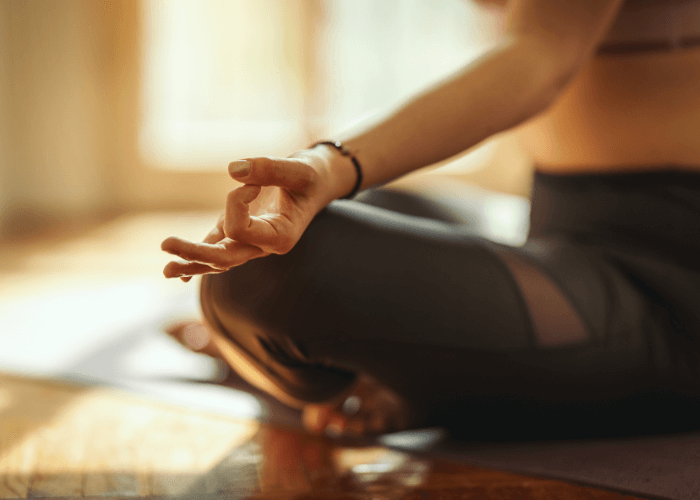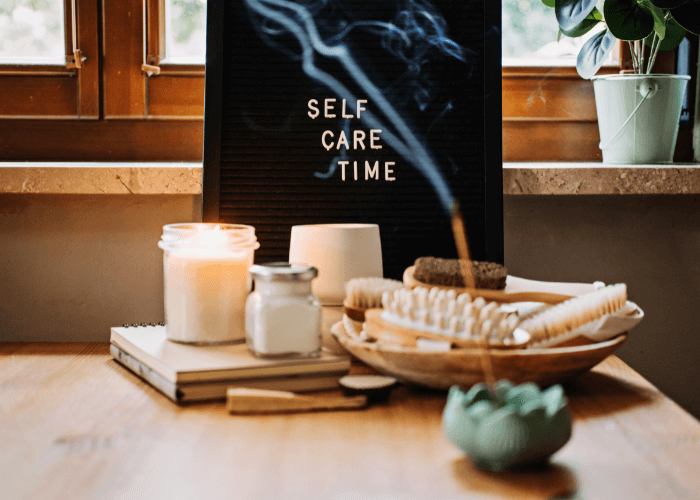20+ Grounding Techniques for Anxiety for When You Feel Overwhelmed
If you have anxiety, you know the heart palpitations, the dry mouth, and the trembling. You know the feeling of cold sweat coming over your body and the panic taking over your mind. At this moment, all reality and logic seem to blur together. However, there are ways to manage those symptoms, and these are called anxiety grounding techniques.
Anxiety is usually triggered by fight-or-flight instincts which are common in people with traumatic events in their lives. As a result, such people develop PTSD, and they always feel like the world is out to get them.
Grounding techniques for anxiety are a precious resource for those with intrusive thoughts that influence their lives negatively. So, let’s talk about the best grounding strategies out there.
What are Grounding Methods In a Nutshell?
Grounding exercises for anxiety are mental or physical actions that distract you from the anxiety when it hits.
Such methods help you focus on the current moment and what is happening around you. Grounding methods enable you to create a healthy space from upsetting feelings in situations where it’s needed.
These methods can help you achieve the following:
- Decrease anxiety;
- Improve well-being;
- Decrease stress;
- Improve your mood;
- Help you deal with post-traumatic stress disorder (PTSD);
- Decrease depression;
- Lessen dissociation, etc.
Grounding skills are distributed in categories like physical grounding techniques, mental grounding techniques, and soothing grounding techniques.
Physical Grounding Techniques
Physical panic attack grounding techniques for anxiety take over all of your senses, so your attention is directed toward the current moment.
Below, we have gathered some of our favorites which are pretty effective.
Use Water, Touch Items, and Breathe in Deeply
The first panic attack grounding technique is to put your hands in some water and feel the temperature with your palms, fingers, and backs of your hands. Try out with warm water and then cold water. Examine how it feels with both temperatures. Bring your focus on your body.
The next good technique is picking up items and seeing whether they feel soft, heavy, warm, or cold. Think about their color and texture. How do you feel about them? Import breathing deeply in the mix and feel your lungs expand each time you inhale. Focus on exhaling slowly and steadily.
Savor Your Food and Scents, Take Walks, and Hold Ice
Good physical grounding techniques for anxiety include savoring what you eat, drink, and smell. Take small sips and bites out of your food and drinks. Explore their smell and taste.
If there is a scented candle around you, breathe in deeply. Notice its notes- is it spicy, sweet, or citrusy? This helps you concentrate on your surroundings and focus less on your anxiety.
Taking short walks and counting your steps help, too.
However, one of the best grounding techniques for anxiety is still holding a small piece of ice. The cold sensation makes your brain focus on it, and the anxiety strips away.
Do Exercises, Listen Carefully, and Focus On Your Body
Doing stretches or exercises like jumping jacks, jumping rope, jogging, or stretching can help you release stress and boost serotonin. Simply notice how your body moves and feels, how the mat and floor you exercise on rub against your body. For example, intentionally wiggle your toes or curl your fingers, and pay attention to how that feels.
Incorporate listening to the sounds when you exercise – what sounds does the gym equipment make, the conversations around you, the aircon working in the background, anything.
Use the 5-4-3-2-1 Technique
The last physical grounding technique is the 5-4-3-2-1 method. With this method, you count backward from 5 and list things you notice in your surroundings.
List 5 things you hear, see, touch, smell, and taste. Notice even the most minor things, like the hum of your computer box or the tiny specks of color on your carpet.
Mental Grounding Techniques
Mental grounding techniques for anxiety are good for helping you turn away your thoughts from overwhelming sensations.
Memory Games, Math, Poems, and Categories
Memory games are great when you feel like your mind is going to burst. Simply take a photograph and look at it for 10 seconds. Then, turn the photo upside down and try to remember it as best as possible. Write down everything you remember.
Thinking in categories is also great, so place down some categories, like football teams or musical instruments and write as many things as you can think of.
If you are a maths person, you can use math to calm yourself down. For example, count backward from 100 or do short equations in your head.
Reciting a book passage, a song, or a poem in your head and visualizing them is another good way to stay concentrated away from anxiety.
Leave the Pain Physically Behind
Visualizing throwing your pain away, like balling it in a scrunched-up paper ball or putting it in a box, helps. Then, you can jog, bike, swim, or walk away from these feelings and thoughts. See your anxiety as a TV program or a song and change the channel or mute the volume.
You can even describe your surroundings in your head, like, “This building is yellow with a red roof. The sun is shining on my face, and I can hear a bike bell nearby. A poodle is barking at children jumping rope.”
Soothing Grounding Techniques
Finally, using soothing grounding exercises for anxiety is another great option.
Below, you will see some examples.
Picture the Face or Voice of a Loved One and Be Kind to You
Picturing the face or voice of a loved one can make you feel comforted and confident that you will get through every obstacle. Imagine them coming through a door and sitting opposite you. Talk to them in your head and let go of your pain.
You can also visualize a favorite place or memory and feel its warmth.
Remember to be gentle towards yourself with phrases like “you are doing your best,” “you are strong,” and “you will make it through.”
Spend Time With Your Pet and Plan Activities
Spending time with pets is so important. You can snuggle with them or play at home and enjoy your company.
If you have a dog, go on a long walk or to the dog park and throw a ball together or throw them a stick. If you have a cat, play together with their cat toys.
Plan activities with humans, too. Go to the cinema or a restaurant with friends or family. Be present in the moment and cherish this experience. Share with them what bothers you, and you will feel a weight lifted from your shoulders.
Touch Comforting Items, List Your Favorite Things, and Listen to Music
Touching something comforting like a fluffy blanket or a loved T-shirt, even a smooth stone, is good for comfort.
Put on your favorite socks, scarf, or sweater, and feel the fabric against your skin.
List Your Favorite Things, and Listen to Music
Listing your favorite things can also bring happiness. Then, listing some things that you are grateful for helps out, too.
Listening to music also helps, and you can even try dipping into some soothing podcasts for mental health or mental health apps.














